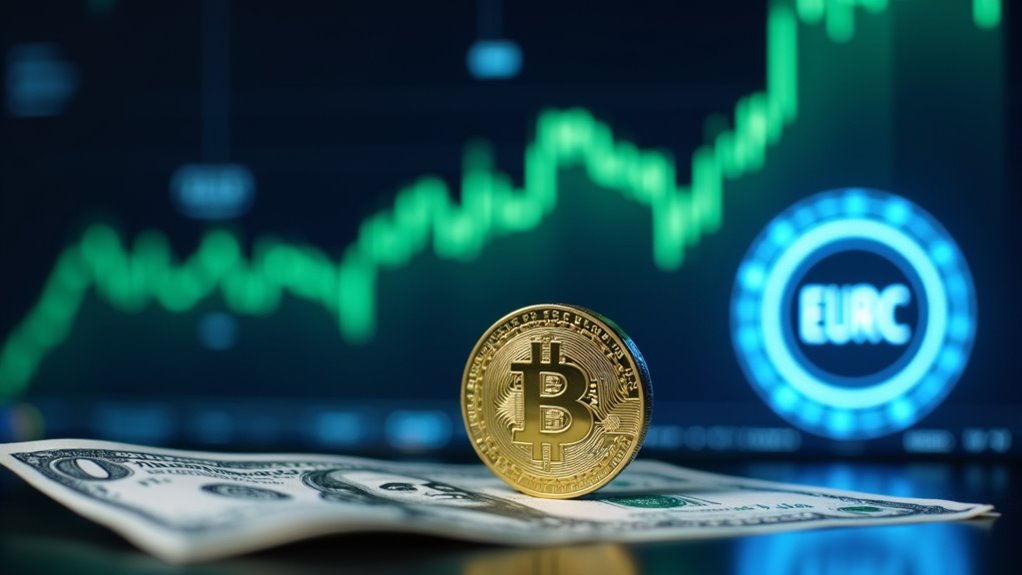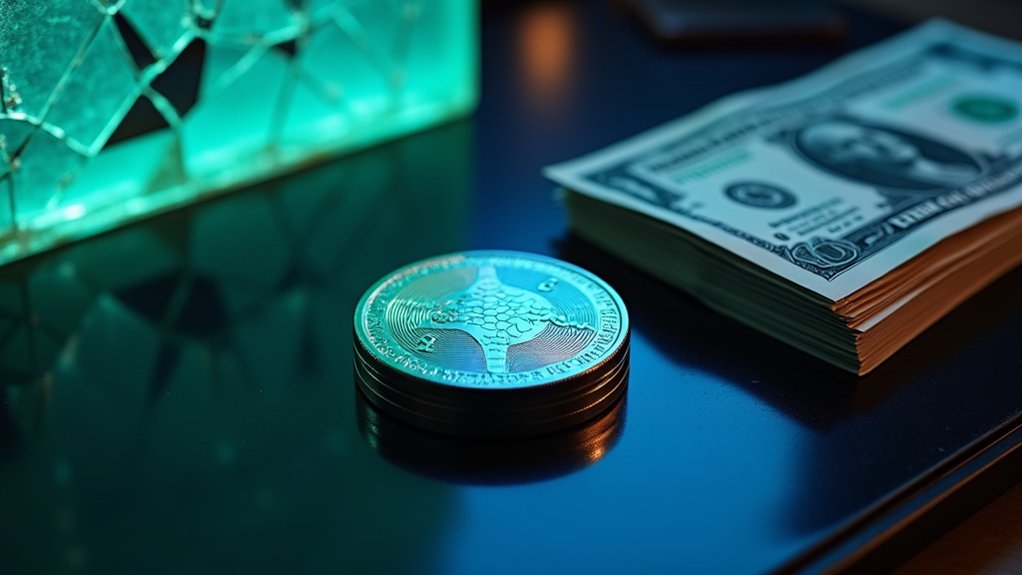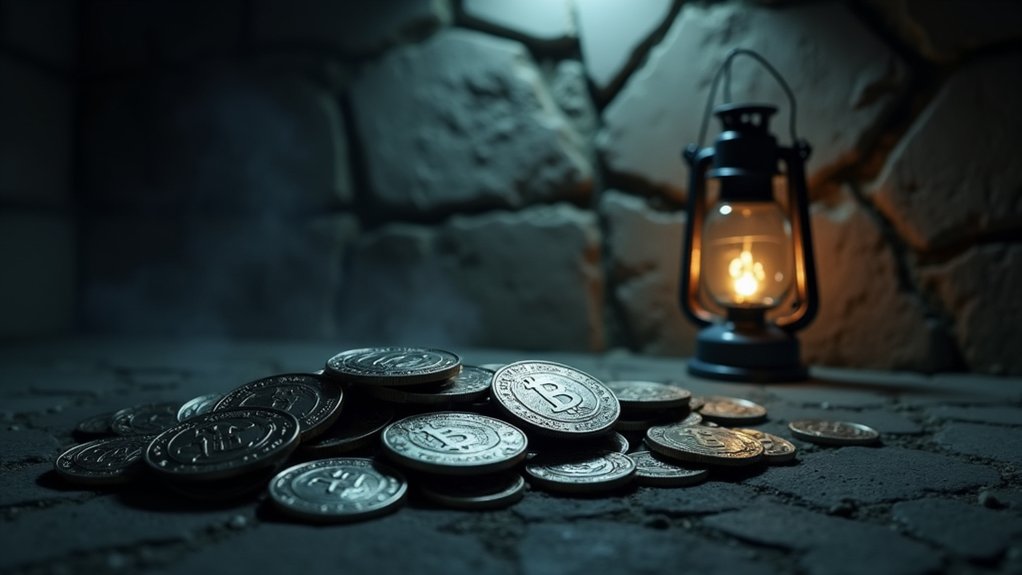Circle’s euro-backed stablecoin EURC has rocketed to unprecedented heights, catapulting its market capitalization by a staggering 136% since January. By mid-April 2025, EURC’s market cap surged from $84 million to over $198 million, painting a striking picture of investor flight to euro-denominated digital assets. This meteoric rise unfolds against a backdrop of weakening U.S. dollar sentiment and escalating global trade tensions.
EURC’s explosive 136% growth signals a seismic shift toward euro-denominated digital refuges amid dollar uncertainty.
The euro itself has climbed to its highest perch since February 2022, buoyed by economic resilience while the dollar wavers. Like a ship finding safe harbor during a storm, EURC has become a refuge for those seeking stability in digital form. The stablecoin’s compliance with the EU’s stringent MiCA regulation has transformed a bureaucratic hurdle into a golden ticket for European market dominance.
Meanwhile, Tether’s USDt—once the undisputed king of stablecoins—finds itself exiled from European shores due to regulatory non-compliance. Binance, reading the regulatory tea leaves, delisted USDt for EU users, leaving a vacuum that EURC enthusiastically fills. The contrast couldn’t be sharper: one coin retreats while another advances. The platform’s smart contracts automatically execute trades and transactions without traditional intermediaries, enhancing efficiency and reducing costs.
DeFi protocols like Aave have witnessed substantial EURC inflows, as traders pivot toward euro-backed options. This shift reflects a broader trend—57% of stablecoin users report increased usage over the past year, with 72% expecting this growth trajectory to continue. The digital euro‘s appeal transcends mere speculation; it offers the tangible benefits of programmability, transparency, and lightning-fast settlements. The preference for EURC exemplifies how money functions as a store of value in uncertain economic times.
For emerging markets battling inflation’s cruel bite, stablecoins represent more than convenience—they offer economic lifelines. Cross-border transactions that once drained wallets and patience now flow efficiently through blockchain channels.
The European Central Bank watches this private sector innovation with mixed emotions, as its own digital euro project slowly takes shape. As traditional banking and bleeding-edge finance continue their awkward dance, EURC stands at the intersection—a bridge between old-world stability and new-world technology, rising 43% amid the uncomfortable shuffle.









